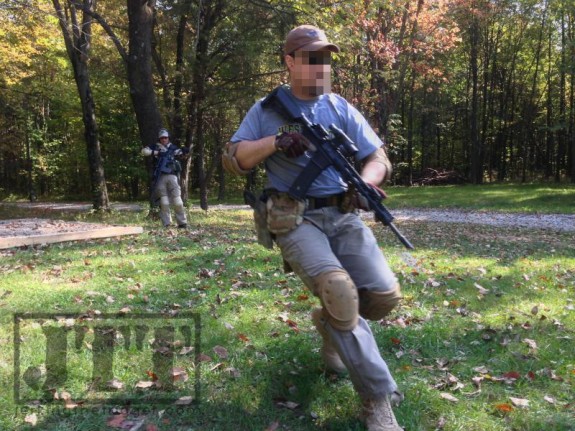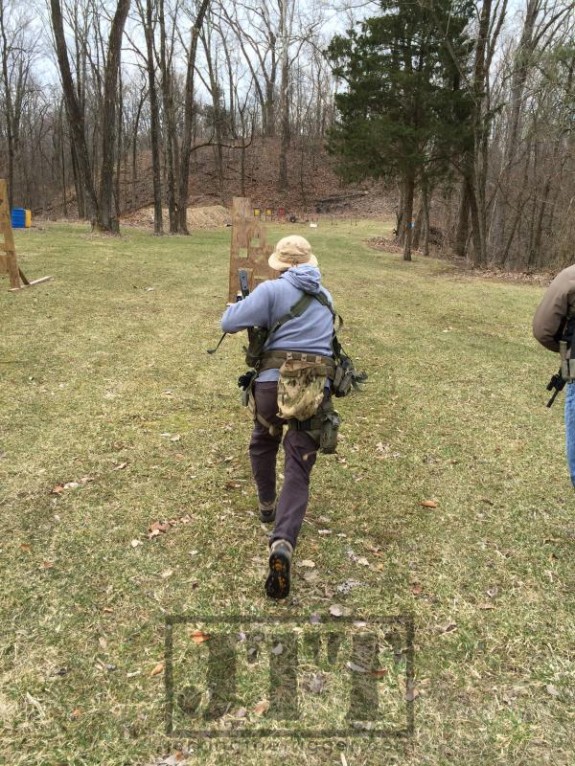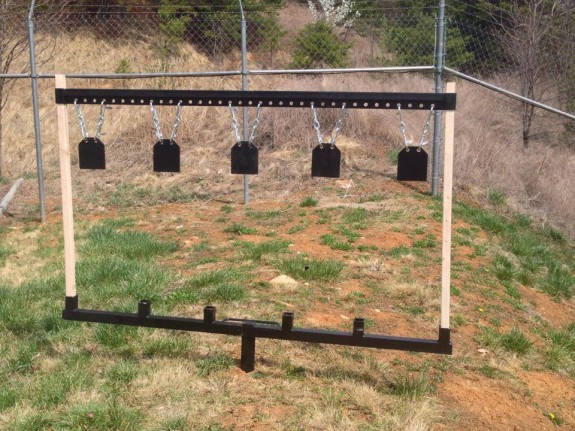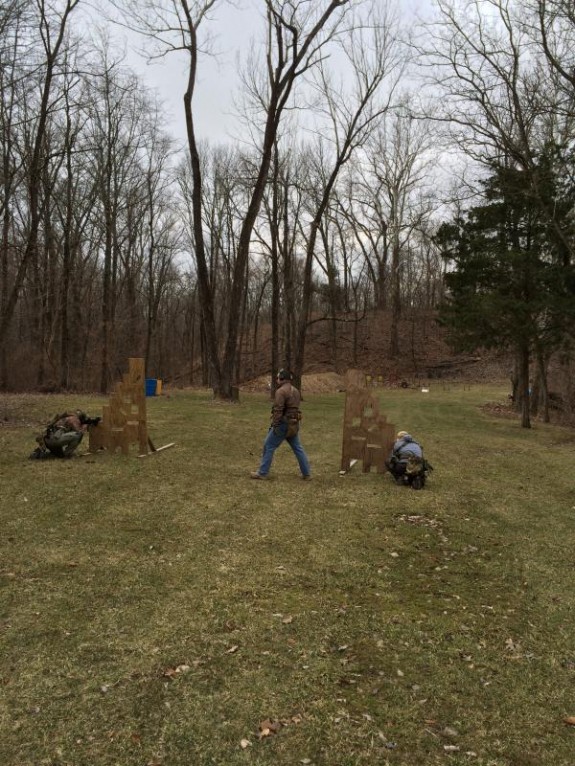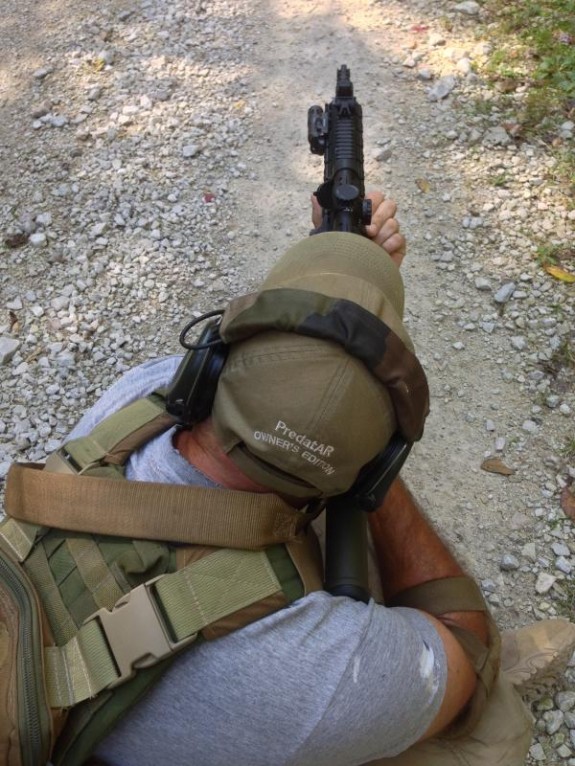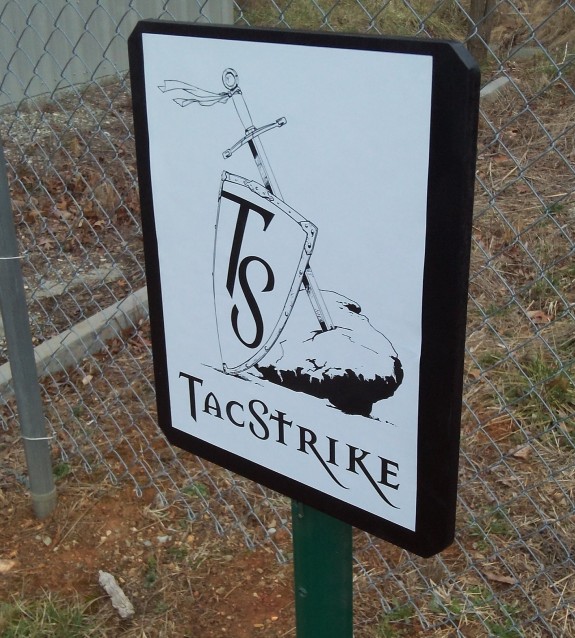Adding stress to your training is invaluable and there are a number of ways to do it. You could shoot against the clock on a shot timer, add elements of competition if you shoot with buddies, you can increase your time and accuracy standards, you can shoot drills that are complex enough that you can’t cruise through without engaging your brain, or you can add strenuous physical activity.
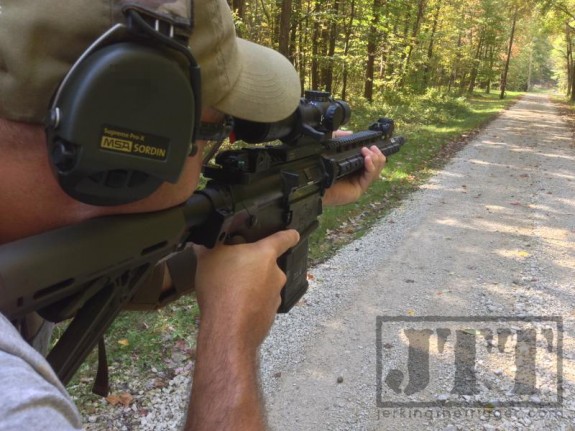
Run the gun and then run the road! Long ranges like this present opportunities to incorporate jogging/sprints into your drills
Why Add Physical Activity to Your Range Drills
There are obvious benefits to adding physical activity to your range training and less obvious ones. I can tell you about some of the less obvious ones but they really have to be experienced to appreciate them.
One obvious benefit is that it becomes another opportunity to work on your overall physical fitness. Just spending a day standing and moving around on the range is certainly better for you than sitting around but you can really take that to the next level by adding intentional physical activity.
Another obvious benefit, especially for guys like me, is some small measure of stress inoculation. I sit at a desk for a living and do not pretend to know what it is like to be in a firefight, on a felony stop, or similar high stress situations. I do not get many opportunities to test my skills under these circumstances so pushing my physical limits a little on the range is probably as close as I will get.
The best benefit is probably the least obvious. Adding physical stress to your drills will do wonders for your mental focus. I have completed drills that are seemingly simple but once the shooter is confronted with a fairly intense, multi-step physical activity like tossing a kettlebell over a saw horse and then stepping under the saw horse, their focus shifts from the sequence of the drill to the physical task at hand. You can usually do this a few times but once fatigue sets in, switching focus between activities becomes very difficult. I believe that mental focus is one of the most significant elements of shooting performance and this is a great way to find the limits of your focus. You can read all you want about this but you won’t appreciate it until you have lost your way in the middle of a simple drill because you had to break your sequence to toss a kettlebell around.
How to Add Physical Activity to Your Range Drills
The biggest challenge to adding physical activity to your range drills is that you must have access to a place that allows it. That big state run range that doesn’t let you draw from the holster probably isn’t going to take too kindly to you performing functional fitness tasks on their range. If you don’t have access to private land, a range that is progressive in how they think about training, or a range without much supervision you may want to look for a shooting competition in your area as these often incorporate elements of physical activity.
The easiest way to add physical activity to your range drills is to incorporate running. Instead of just standing on a yard line and punching holes in paper, consider starting your drill with a sprint. You could also use drills that incorporate movement between yard lines or various shooting stations.
You can also add functional fitness movements by incorporating weights of some kind. Medicine balls, kettlebells, sand bags, or even a full ammo can will all work well due to their portability. You might do something like carry the weight from point to point or lift the weights onto or over an obstacle. You could even just insert standard exercises like kettlebell swings or cleans into your drill. I like to insert these weight elements between shooting elements in a sequence so the shooter has to keep track of where they are in the sequence.
If you can carry a weight to the range and you don’t have room to run, consider body weight exercises that stress large muscle groups like squats, burpees, push-ups, low crawling, and others. These require limited space and no additional gear. Do them in whatever gear you have on at the time.
An Example
I recently shot a drill with training partners that was fairly straight forward on its face but it turned into the perfect showcase for the benefits of adding physical activity. This carbine drill stacked multiple stressors to make a sort of mind screwing stress soup that wrecked everyone who tried it. It was diabolical and we loved every minute.
The drill required only 6 shots spread over 2 shooting stations. Easy right? Here is how to set it up…
You need two shooting stations 20-30 yards apart with steel targets (preferably C-zone size or smaller) placed far enough down range that you can’t hose them (75 yards or more for carbine, 25-30 if you adapt it to handgun). Place a saw horse and a kettlebell midway between the shooting stations. The drill requires 6 shots and the shooter starts with 10 rounds in their firearm (the extra 4 rounds are used to clean up misses).
You are to get 1 hit per station (clean up all misses) in the following shooting position sequence: standing, kneeling, prone, prone, kneeling standing. In between each station, you complete a sprinting and kettlebell sequence. For every round of the original 10 that you bring back, you drop 5 seconds off your total time. So the drill ends up looking like this…
When the timer starts, the shooter shots one round standing from station 1, sprints to the saw horse, lifts the kettlebell over the sawhorse, ducks themselves under the sawhorse, and then sprints to station 2. Here they shoot one round from the kneeling and complete the sprint/kettlebell sequence again on their way back to station 1 and so on. This establishes the simple pattern: shoot from prescribed position, complete sprint/kettlebell sequence on way to next station, shoot from prescribed position, and so on. This happens until the sequence is complete and the timer stops on the final hit.
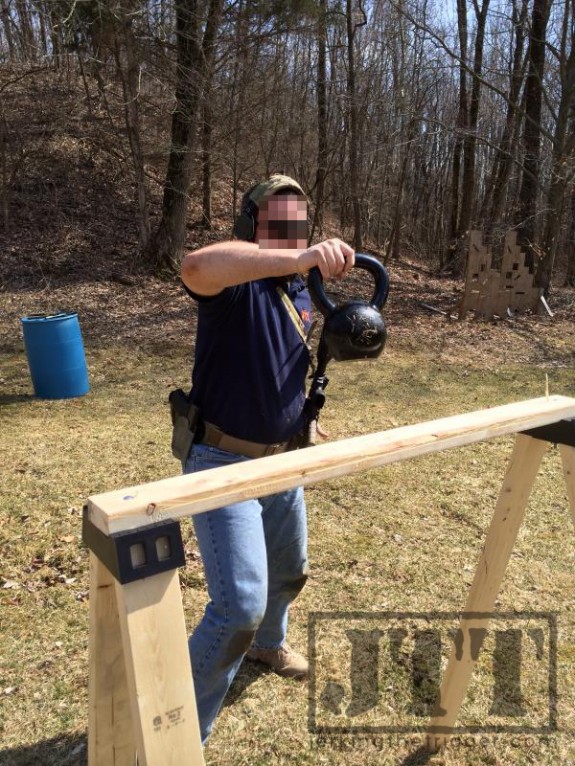
Believe it or not, stepping under the sawhorse is harder than cleaning the kettlebell after you have run the drill a few times.
On paper the drill may be only 6 shots, 3 shooting positions, and 2 stations but the physical components wreaked havoc on us. A sequence that is easy enough to remember when you are standing still vanished out of our minds when confronted by the sprint/kettlebell sequence. The same thing happened to just about every shooter but it happened at different times (probably depending on the fitness level of the shooter).
Every shooter needed a reminder of which position to shoot and some of them even shot extra positions because they lost their place in the sequence. No one shot the drill entirely clean even though it would have been a cake walk without the physical elements. Of course, shooting it for time with an accuracy standard and in competition with your buddies while they watch keeps it pretty spicy as well. I strongly encourage trash talking and spirited razing from the peanut gallery during this drill.
Be Safe
Be as safe as possible when completing these drills. Make sure that every participant knows how to use the fitness equipment without hurting themselves, be conscious of your muzzle when you move, and always, always, always, place the gun on safe when you are moving.
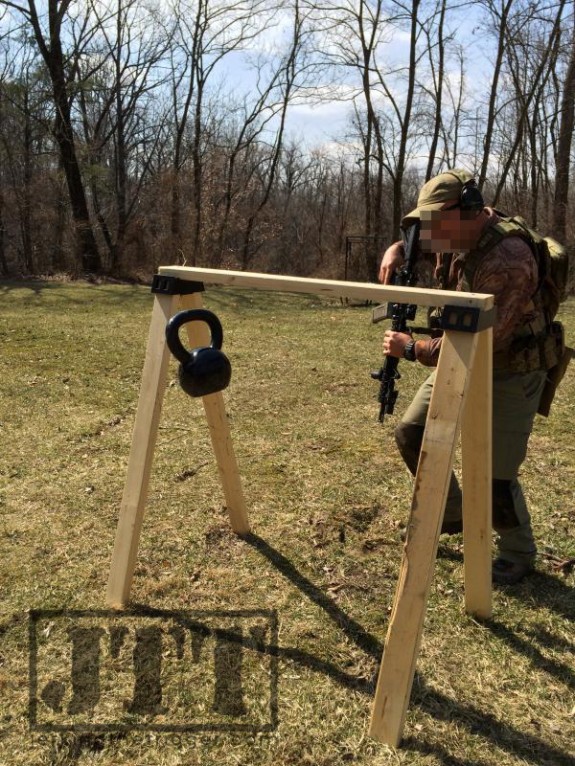
The kettlebell is still in the air and the shooter is already stepping under. Push the pace on the physical parts so you can take your time on the shooting.
Wrap Up
It takes mental focus to shoot a drill like the one above cleanly due to the physical components that serve to disrupt your line of thought. The only way to overcome this type of stress is to train your body and your mind to deal with it. I am not qualified to speak to how this type of artificially induced stress compares to the stress of actual combat but I will likely never have to worry about that. I still think there is tremendous value in adding these elements to your training. You really find out about your grasp of the fundamentals of shooting and mental focus when you push your physical limits a bit.

